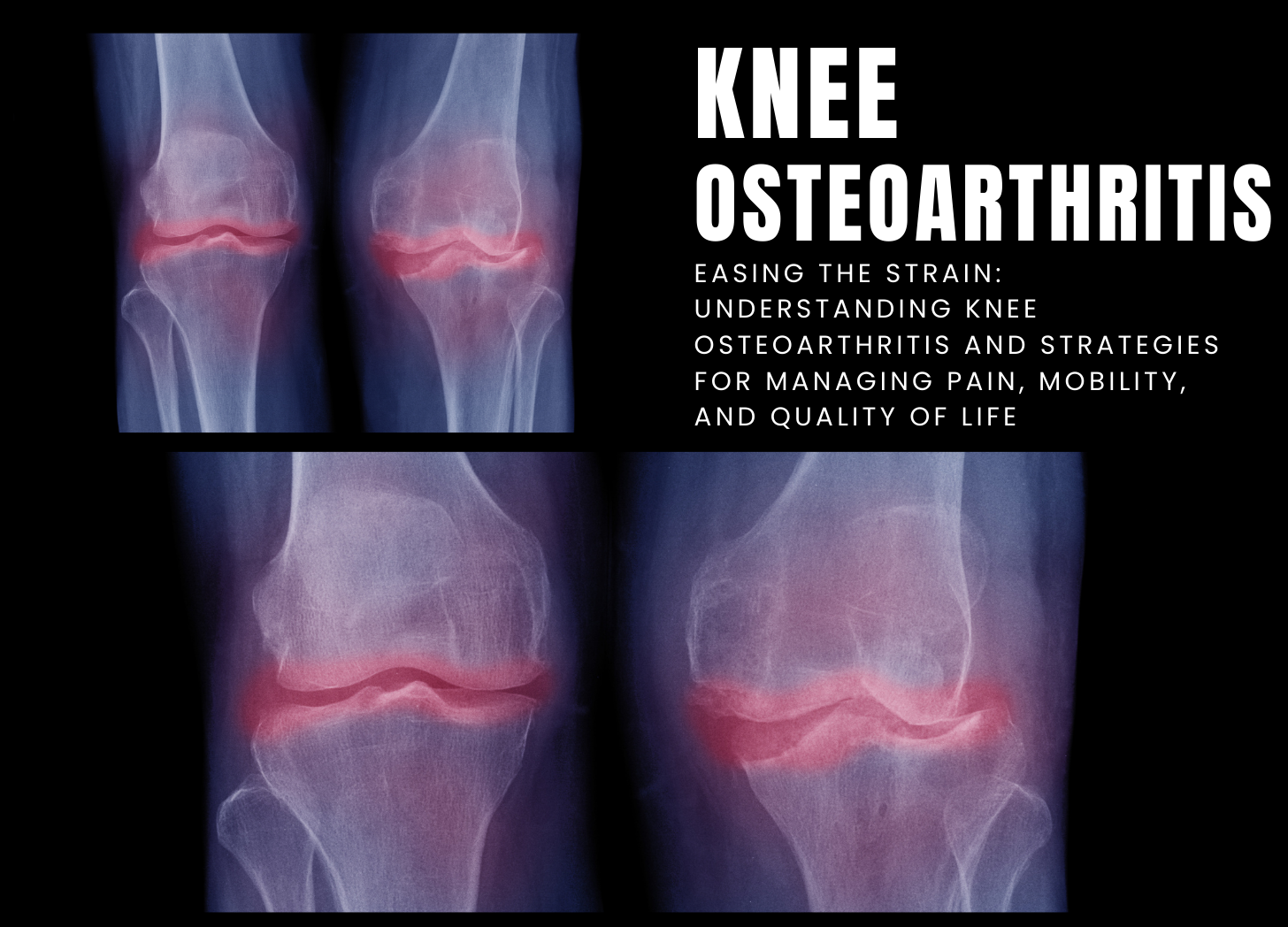Contact Us
Contact Us

Knee osteoarthritis (OA) is a common degenerative joint condition caused by the slow breakdown of cartilage in the knee joint, resulting in pain, stiffness, and limited mobility. Cartilage is a smooth, slippery tissue that cushions the ends of bones and allows for easy joint movement. As cartilage wears away, bones may rub against one another, resulting in pain, inflammation, and the production of bone spurs. Knee osteoarthritis can have a substantial influence on quality of life, limiting daily activities and reducing mobility.
Although the specific etiology of knee osteoarthritis is unknown, it is thought to be a combination of genetic, biomechanical, and environmental factors. Age is a key risk factor, as the likelihood of having osteoarthritis increases with age owing to joint wear and tear over time. Obesity, past joint injuries or operations, recurrent knee stress from activities like jogging or leaping, and certain medical illnesses like rheumatoid arthritis or metabolic problems are all risk factors for knee osteoarthritis.
Common symptoms of knee osteoarthritis include pain, stiffness, edema, and tenderness in the knee joint, particularly after periods of inactivity or prolonged use. Some people may also suffer a grinding sensation (crepitus) or a feeling of instability in their knee. Knee osteoarthritis symptoms usually develop with time and can have a major influence on mobility and quality of life, making it difficult to walk, climb stairs, or do normal jobs.
Knee osteoarthritis is often diagnosed using a medical history, physical examination, and imaging procedures such as X-rays or magnetic resonance imaging (MRI) to determine the amount of joint destruction and rule out other potential reasons of knee pain. Blood tests may be used to rule out inflammatory types of arthritis, such as rheumatoid arthritis. Early detection and treatments are critical for controlling knee osteoarthritis and avoiding additional joint damage.
Treatment for knee osteoarthritis seeks to alleviate pain, enhance joint function, and decrease the disease’s development. Conservative treatment options may include weight loss, exercise, and physical therapy to strengthen the muscles surrounding the knee and enhance joint stability. Nonsteroidal anti-inflammatory medicines (NSAIDs), corticosteroid injections, and viscosupplementation (injection of lubricating fluid into the joint) may be used to alleviate pain and inflammation. Braces, orthotic shoe inserts, or walking aids may be prescribed to reduce stress on the knee joint.
In cases with severe or resistant knee osteoarthritis that does not respond to conservative therapy, surgical intervention such as knee arthroscopy, osteotomy (knee joint realignment), or complete or partial knee replacement surgery may be considered to reduce pain and restore function. These surgical techniques are designed to restore mobility and quality of life by removing damaged tissue, realigning the joint, or replacing damaged joint surfaces with artificial components.
In conclusion, knee osteoarthritis is a common degenerative joint condition defined by cartilage breakdown in the knee joint, which causes pain, stiffness, and limited mobility. While knee osteoarthritis can be difficult to manage, early detection, conservative therapies, and surgical interventions, where needed, can help ease symptoms and improve quality of life for those affected.
References:
1.Arthritis Foundation. (2022). Osteoarthritis of the Knee. Retrieved from https://www.arthritis.org/diseases/osteoarthritis-of-the-knee
2. Mayo Clinic. (2022). Osteoarthritis. Retrieved from https://www.mayoclinic.org/diseases-conditions/osteoarthritis/symptoms-causes/syc-20351925
Post a Comment